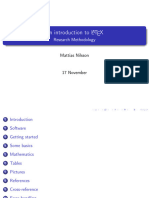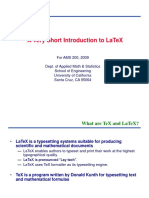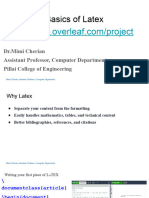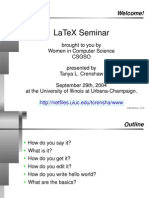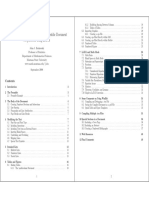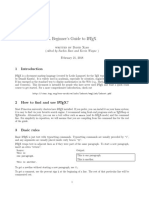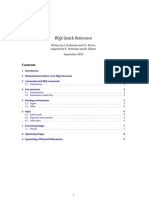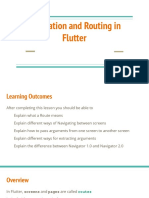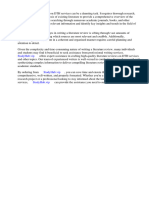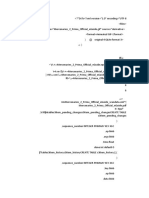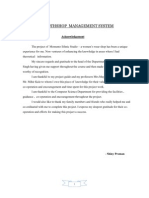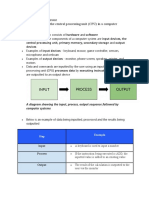0% found this document useful (0 votes)
30 views26 pagesLecture1-5 LatexMatlab
LaTeX is a high-quality document preparation system primarily used for technical and scientific documents, allowing easy integration of mathematical symbols and complex structures. The document outlines installation instructions, basic document structure, and common commands for creating sections, footnotes, citations, graphics, and tables. It also highlights common mistakes and provides additional resources for learning LaTeX.
Uploaded by
240445Copyright
© © All Rights Reserved
We take content rights seriously. If you suspect this is your content, claim it here.
Available Formats
Download as PDF, TXT or read online on Scribd
0% found this document useful (0 votes)
30 views26 pagesLecture1-5 LatexMatlab
LaTeX is a high-quality document preparation system primarily used for technical and scientific documents, allowing easy integration of mathematical symbols and complex structures. The document outlines installation instructions, basic document structure, and common commands for creating sections, footnotes, citations, graphics, and tables. It also highlights common mistakes and provides additional resources for learning LaTeX.
Uploaded by
240445Copyright
© © All Rights Reserved
We take content rights seriously. If you suspect this is your content, claim it here.
Available Formats
Download as PDF, TXT or read online on Scribd
/ 26







